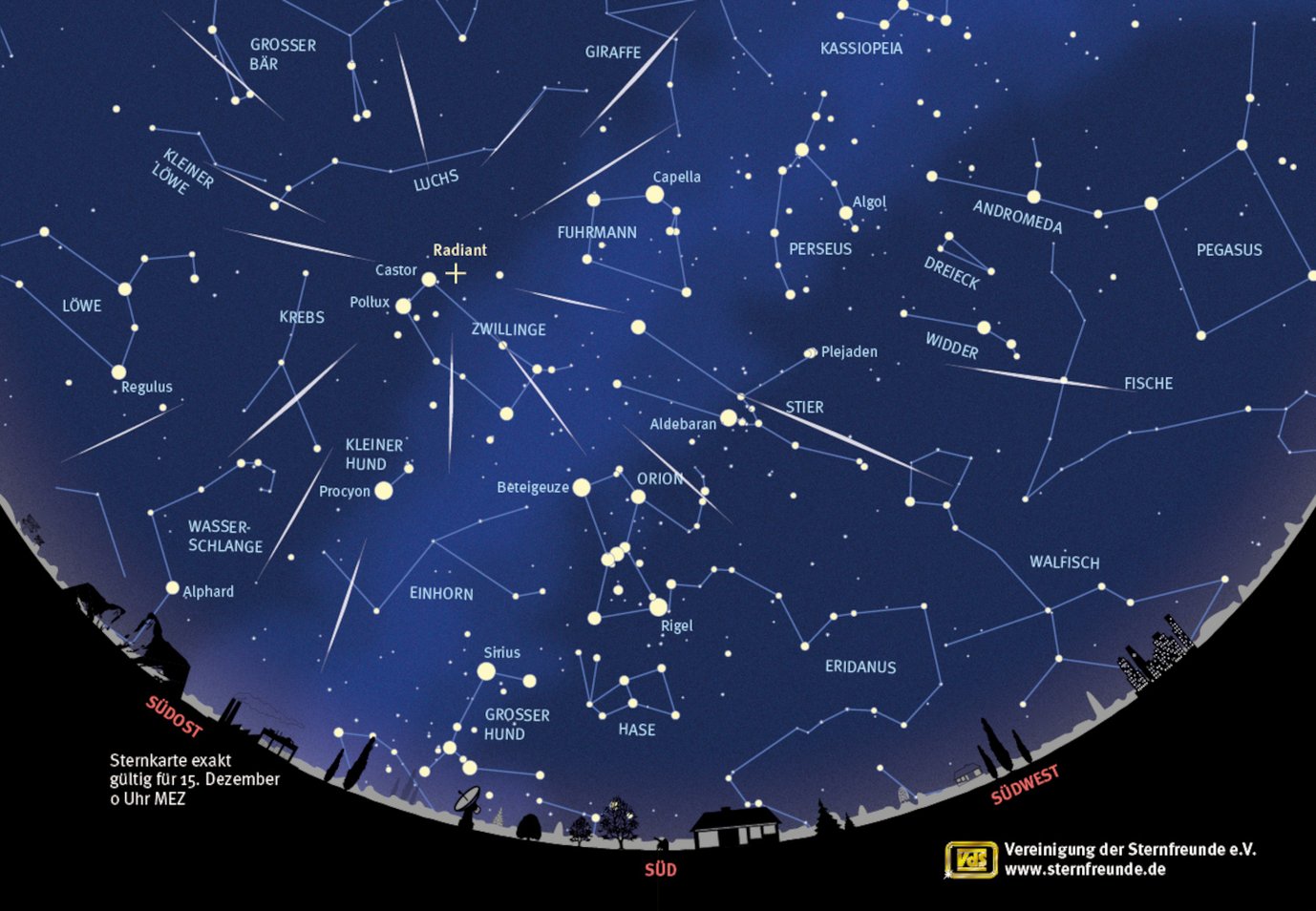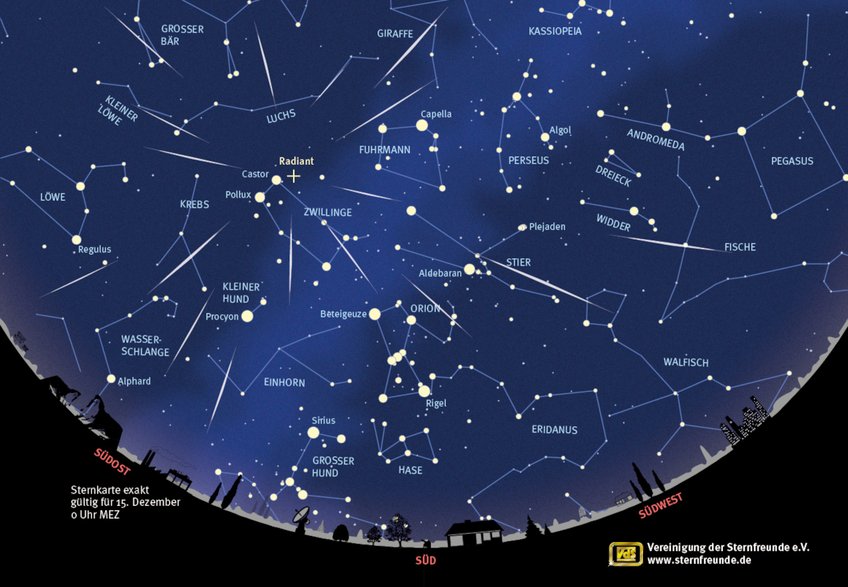Meteors before Christmas - the Geminids are coming
Along with the summer Perseids, the Geminids are one of the great meteor showers that offer a shooting star experience also to less experienced observers. Their maximum of up to 150 shooting stars per hour in mid-December coincides with the waxing moon which does not set until well after midnight this year, so the morning hours are particularly suitable for observing.
The maximum of the Geminids will occur during the night of Monday to Tuesday, and the morning hours of the 14th should see the peak of activity at 8am CET. The constellation Gemini rises already in the evening hours in the eastern sky, so shooting stars can be expected throughout the night. For those who don't know the constellation, Gemini is located just to the left above Orion in the sky. Its two main stars, Kastor and Pollux, a pair of twins known from Greek mythology, are particularly bright. The apparent point of emission of the shooting stars (in technical terms: the radiant) lies just above Kastor, the upper of the two twin stars. But this is only a perspective effect like driving a car through a snow shower.

The reason for the increased numbers of meteors is the passage of the Earth through a cosmic dust cloud presumably left behind by the minor planet "Phaethon" - possibly this asteroid broke up and left debris in its path, which lightens up as shooting stars when entering Earth's atmosphere.
Unlike the well-known Perseid meteors in summer, you don't have to wait until after midnight to see most of the Geminids. However, this year the Moon brightens the sky until after midnight. As soon as it gets dark, you can curiously look out for them. A clear view to the east is advantageous then. During the night the twins rise higher in the south, and on Tuesday morning they set in the northwest.
Several meteors can already be expected on the weekend before the maximum.
